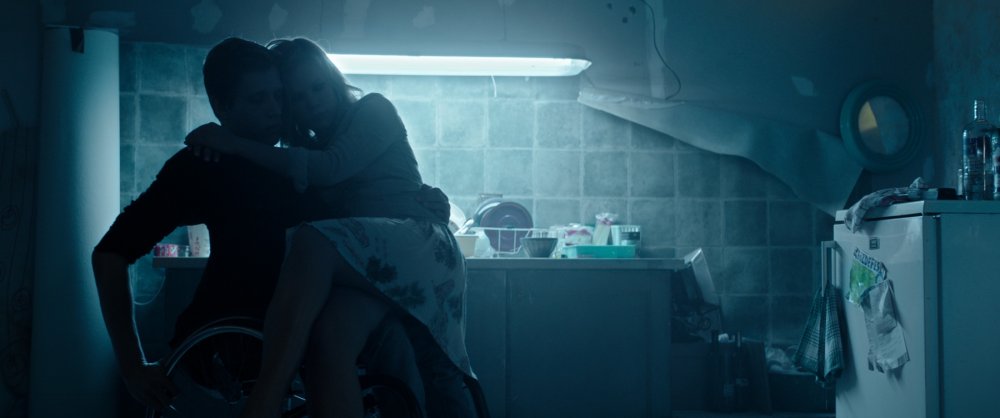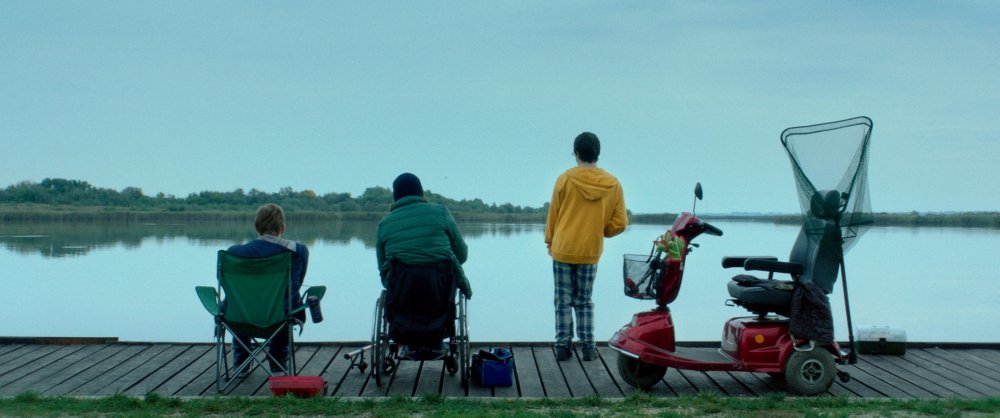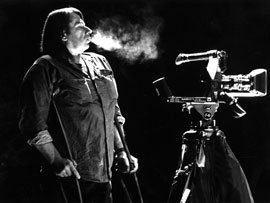Films centring around paraplegics and the disabled are prone to pressing a little too hard on the pathos pedal, last year’s Me Before You being a recent entry in a long, lachrymose succession reaching back to The Men (1950), The Raging Moon (1971), The Other Side of the Mountain (1975) and Coming Home (1978). Attila Till’s Kills on Wheels (the Hungarian title, Tiszta szívvel, rather intriguingly translates as ‘Pure Heart’, just whose heart this refers to being a moot point) sports a sardonic edge that refreshingly aligns it with such irreverent specimens as Benoît Delépine and Gustave Kervern’s Aaltra (2004) and Donavon Warren’s Wheels (2014). Till’s only previous feature, Panic (2008), took a similarly unsolemn look at people suffering from panic attacks.
Hungary 2016
Certificate 15 103 mins
Director Attila Till
Cast
Zolika, ‘Zoli’ Zoltán Fenyvesi
Rupaszov Szabolcs Thuróczy
Barba, ‘Barba Papa’ Ádám Fekete
Zita, Zoli’s mother Móni Balsai
Rados Dusán Vitanovic
Évi Lidia Danis
[2.35:1]
Subtitles
Hungarian theatrical title Tiszta szívvel
UK release date 15 September 2017
Distributor Eureka Entertainment
eurekavideo.co.uk/news
► Trailer
In Kills, the lead character, wheelchair-bound ex-fireman and ex-jailbird Rupaszov (Szabolcs Thuróczy), rents himself out as a hitman to a Serbian mafioso, not in Byronic revenge against a society that degrades him but mainly because it pays well. Scarcely more noble motives attract Zoli (Zoltán Fenyvesi) and Barba (Adám Fekete), the two young disabled men who, bored and frustrated in their care home and looking for excitement, become his none-too-accomplished assistants.
For his part, the Serbian, Rados (Dusán Vitanovic, his dark floppy hair and twisted grin recalling Javier Bardem’s hitman in the Coens’ 2007 No Country for Old Men), employs Rupaszov on the logic that no one will be wary of a guy in a wheelchair; which indeed proves to be the case, allowing the paraplegic to gun down a whole string of baddies in some slightly repetitive Tarantino-style shootouts. If the plot starts to strain credulity (and plot holes are frequent), there’s a reason, made clear in the film’s final reveal, though to be fair it’s hinted at throughout the action, starting with the pre-credit sequence.

While realism isn’t the aim, Till is drawing on his own real-life experience as a volunteer for disabled people. “It was crucial to me,” he has said, “to make a movie about disabled people where they finally aren’t played by actors but get the opportunity to act themselves and be the real heroes.” Of the three principal actors, two – Fenyvesi and Fekete – are genuinely disabled, as are most of the extras seen in the care-home scenes. (We might see a nod here to Miroslav Slaboshpytskyi’s remarkable 2014 film The Tribe, set in a Ukrainian home for the deaf and casting exclusively deaf actors communicating in unsubtitled sign language.)
Playing games with reality and fantasy, working in a few sarcastic side shots at a flawed society (“Hungarians call any shit a profession,” remarks Rados dismissively), the film still lets the occasional darker subtext show through, as when Zoli voices his anger at his estranged father, who, he believes, left because he couldn’t stand to see his disabled son crawling about on the floor. Kills on Wheels here and there slips off course – a wedding sequence goes on too long and doesn’t add much – but it offers an entertaining, ingenious and above all wholly unpatronising take on an often mishandled subject.
-
Sight & Sound: the October 2017 issue

The cinema of Stephen King, plus female desire at the movies, Hanif Kureishi on Peter Sellers’ Indian characters, Darren Aronofsky on Mother and...
-
The Digital Edition and Archive quick link
Log in here to your digital edition and archive subscription, take a look at the packages on offer and buy a subscription.











